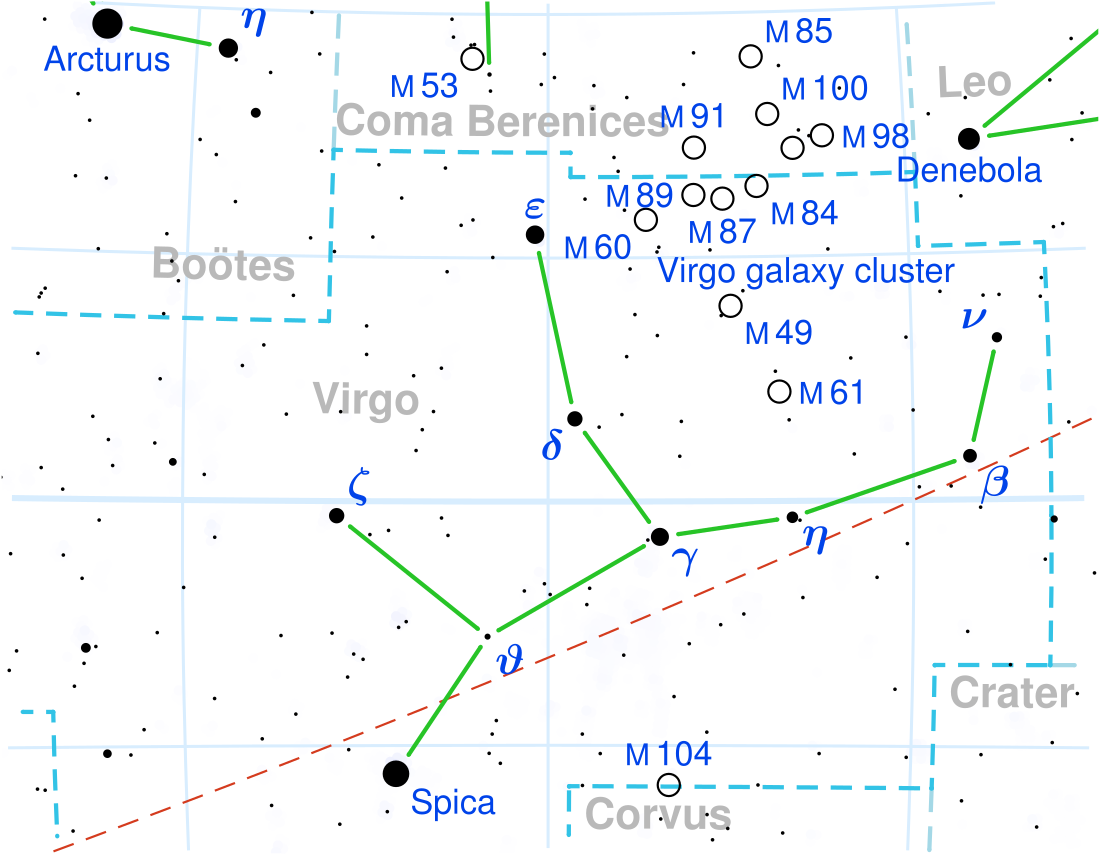Top Qs
Timeline
Chat
Perspective
Pi Virginis
Binary star in the constellation Virgo From Wikipedia, the free encyclopedia
Remove ads
Pi Virginis (π Vir, π Virginis) is a binary star in the zodiac constellation of Virgo. It is visible to the naked eye with an apparent visual magnitude of 4.64.[2] The distance to this star, based upon parallax measurements,[1] is roughly 380 light years.
This is a spectroscopic binary system with a stellar classification of A5V. They have an orbital period of 283 days with an eccentricity of 0.27.[7] The mass ratio of the two stars is about 0.47, with the primary having an estimated mass of around 2.2 times that of the Sun. The primary is a cool metallic-lined Am star.[9]
Remove ads
References
Wikiwand - on
Seamless Wikipedia browsing. On steroids.
Remove ads

